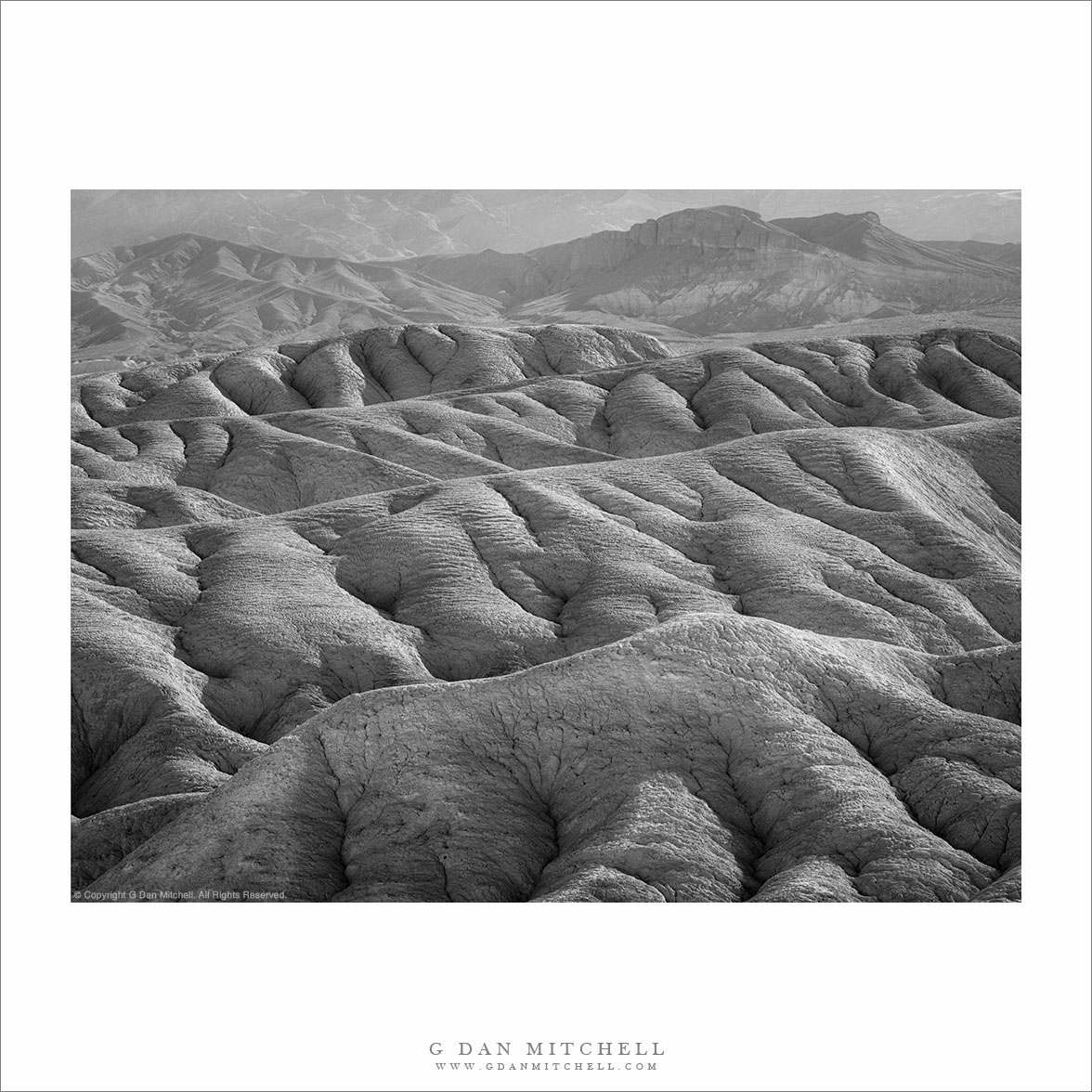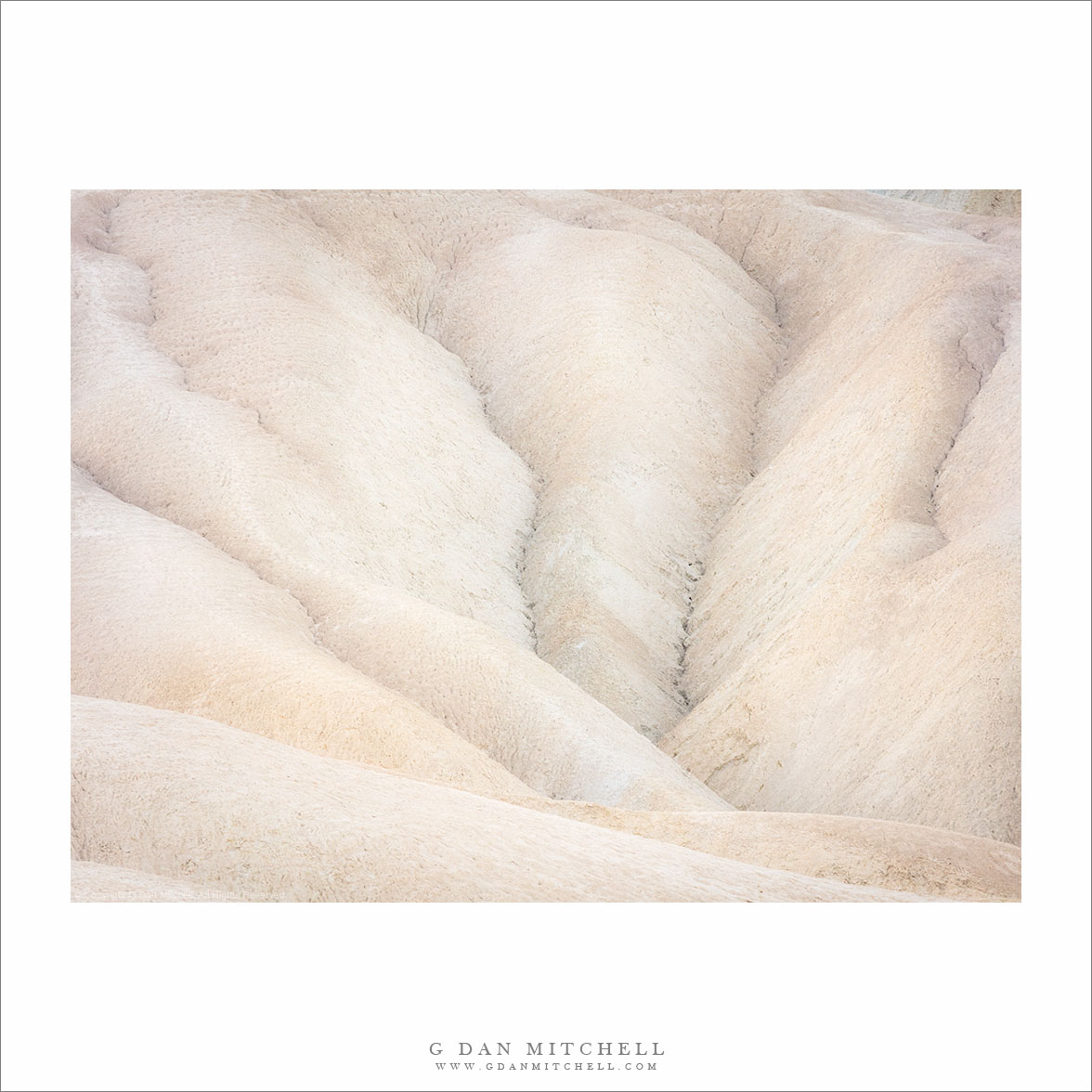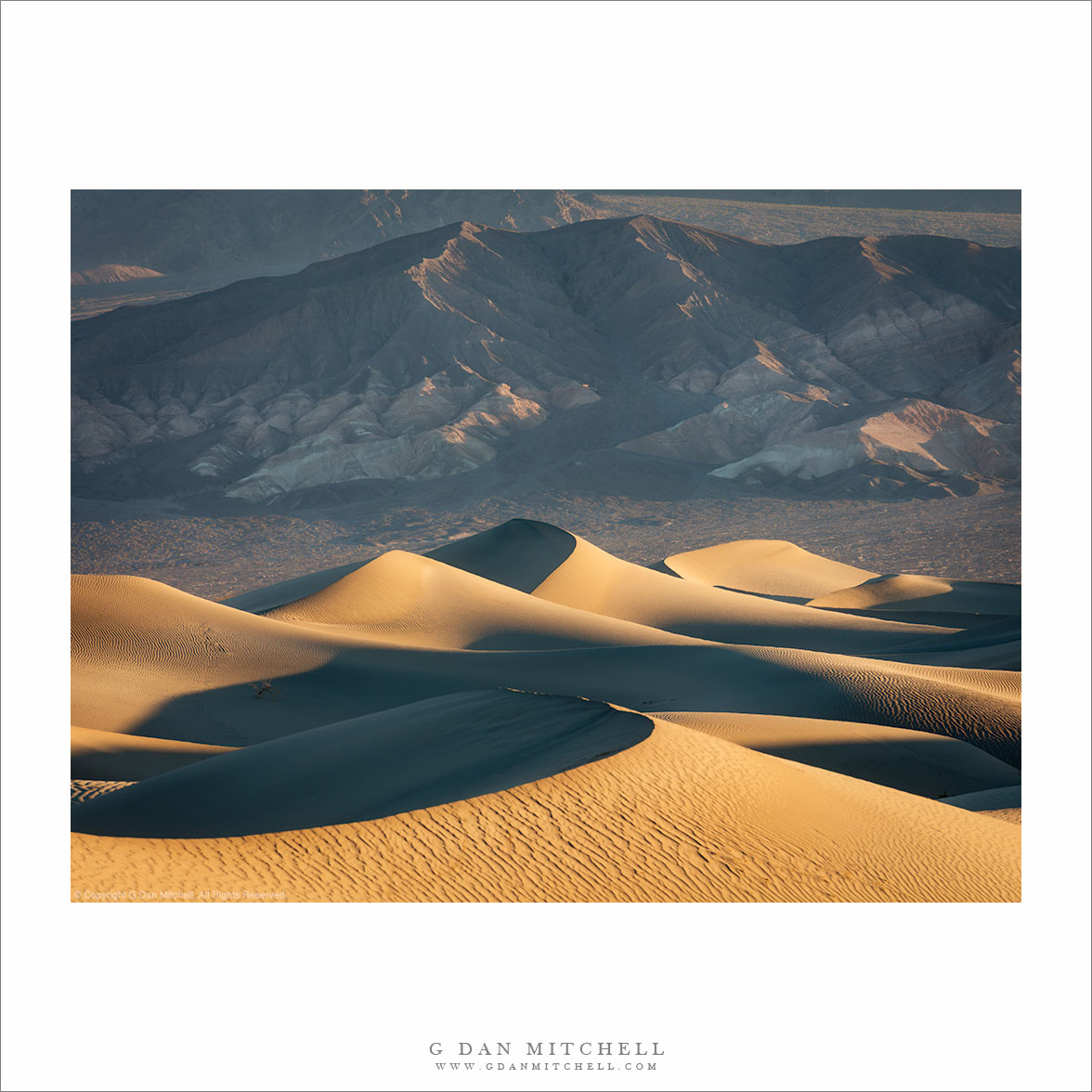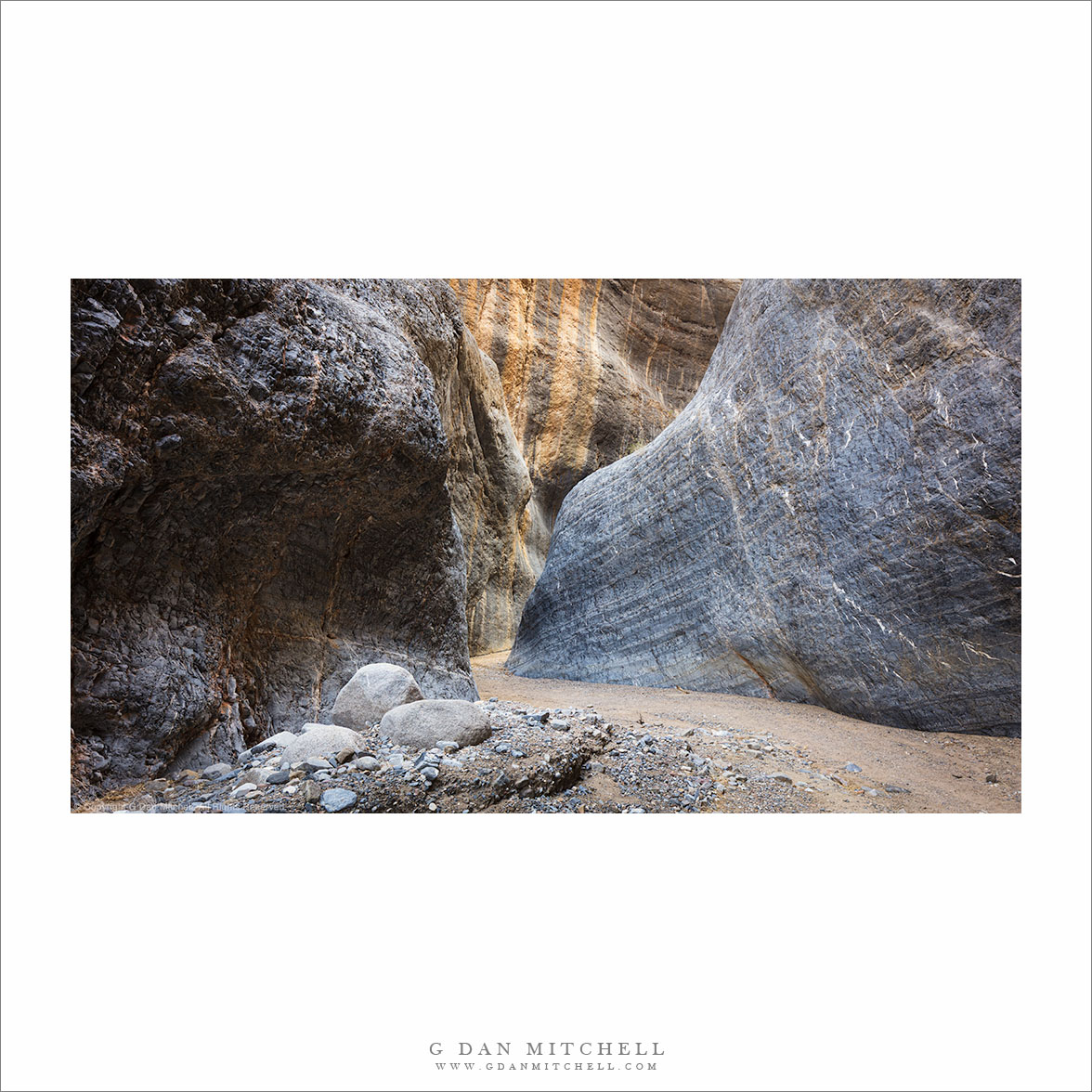
This view has intrigued me for years. At one popular Death Valley National Park location, one comes upon it quickly and often briefly. Because it is the coda of visits to this area that has many other attractions, it is easy to overlook it. It is harder to photograph than it seems that it should be — there are some compositional challenges, and unless the light is right the scene can have very low contrast and tricky colors.
The variety of pattens and details in the scene is remarkable. The first four ridges are low and consist of soft, easily eroded material. The more distant ridge is far away, across an intervening valley, and its details are almost always muted by haze. The foreground formations are deeply eroded and cut by gullies — which might seem like an odd thing at first when you consider that you are in an extremely hot and arid desert.
G Dan Mitchell is a California photographer and visual opportunist. His book, “California’s Fall Color: A Photographer’s Guide to Autumn in the Sierra” (Heyday Books) is available directly from him.
G Dan Mitchell: Blog | Bluesky | Mastodon | Substack Notes | Flickr | Email
All media © Copyright G Dan Mitchell and others as indicated. Any use requires advance permission from G Dan Mitchell.



